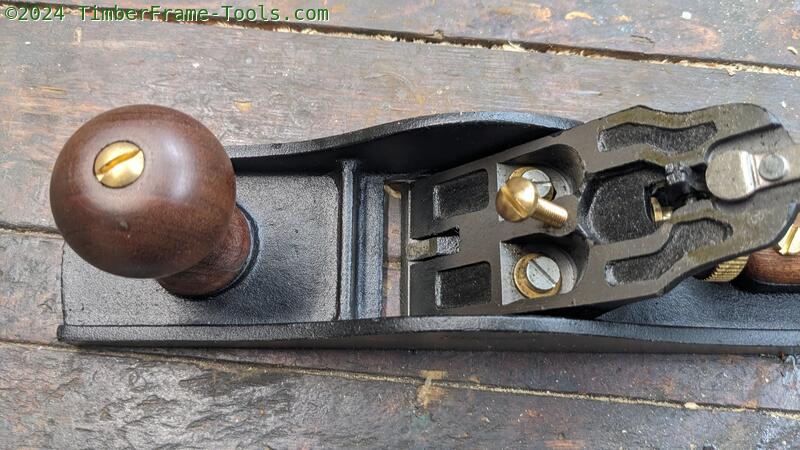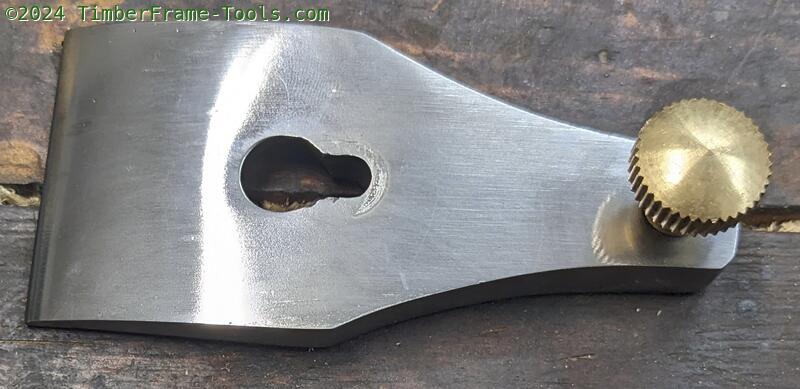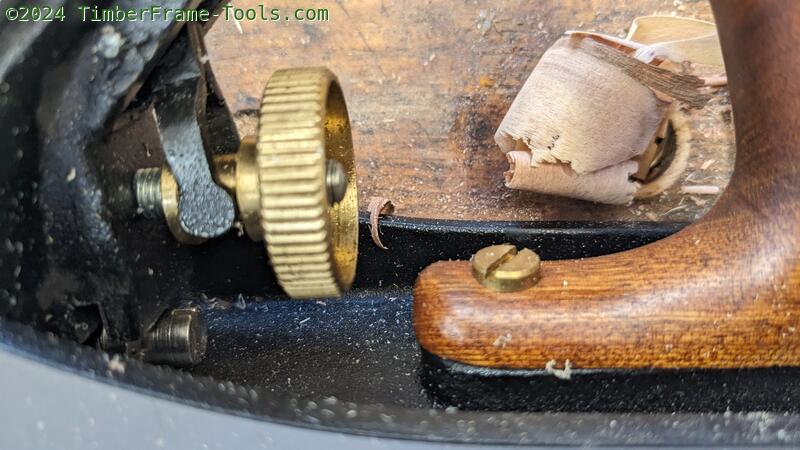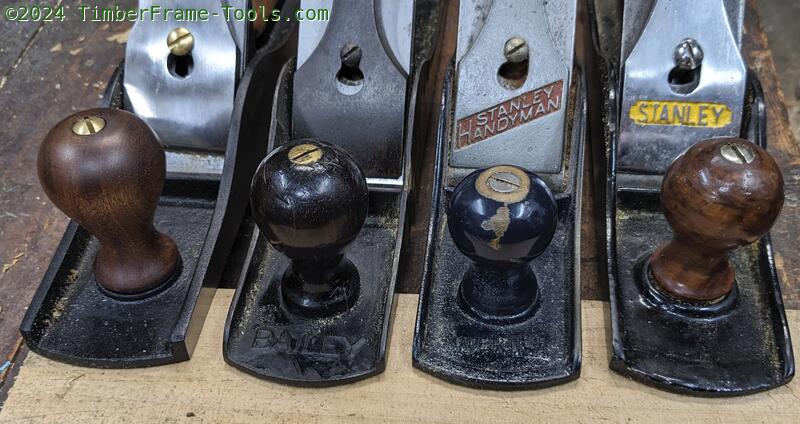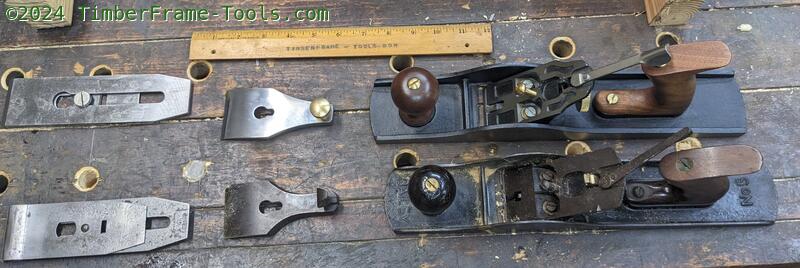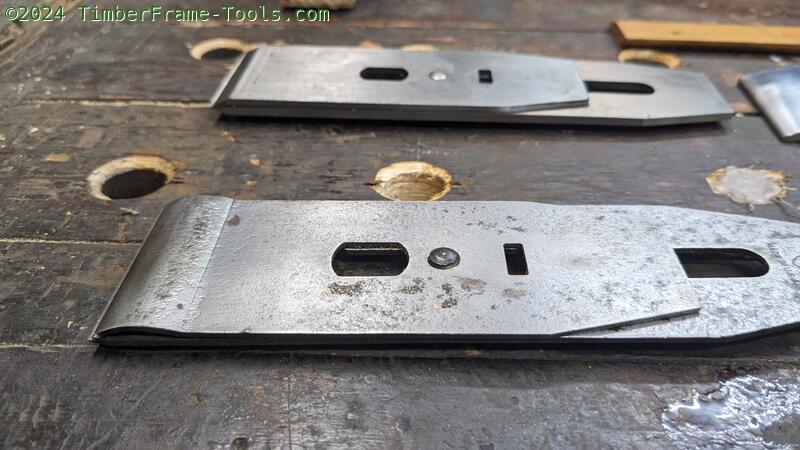I have been buying a few things over the past year from TayTools, also known as Taylor ToolWorks. I’m kind of frugal and always skeptical, especially around lower prices. So I started small, but now I check there first when I need something because their quality is high and their prices are great.
I have been using hand planes in my hobby woodworking for 30 years now. I enjoy them. Planing wood is one of the most relaxing things for me. It gives me a workout, calms my brain, and as the smooth wood emerges from rough, it just makes me smile. I have several jack planes, but they are all flawed in various ways. I decided to treat myself to a new jack plane. I should mention, I have never owned a new plane before. Mine have all been second hand.
I purchased a new TayTools #5 Jack plane. It had good reviews on the site, I liked what I saw in the photos, and being less than half the price of a premium plane or even what most Bailey/Stanley knockoffs are going for also made me happy… but apprehensive.
The package was simple and rugged. Nothing fancy, and that is OK. Fancy costs money, and helps nothing in my shop. On the box was clearly marked “Made in India”. I wish it said “Made in the USA”, but realistically I know that would quadruple the cost.
At first look, I liked what I saw. I checked it for flat with my machinist rule. It was flat. I put it on a piece of float glass to see if I could get it to rock. It sat solid.

The TayTools Iron (lower) is significantly thicker than the vintage Stanley Sweetheart iron (upper). The chip breaker is also thicker.
The iron was great. It took me only 10 minutes or less on a diamond stone to polish the already flat back and hone the bevel.
The knob is made of Sapele (according to their website) is smooth and largely unfinished. Judging by the color, I am guessing it was probably wiped with Boiled Linseed Oil, but certainly not multiple coats. This does not bother me. I prefer Tung oil anyway so it gives me chance to add a few more coats. The frog is well machined and is flat. The lateral adjuster is of the stamped variety, rather than having the riveted wheel. This may be a concern to some. I am less worried because the lateral adjuster is thicker than most that I have seen.
I know the lever cap is traditional for a plane of this style. I however like adjustment bolt. The bolt gives you honest feedback about how much pressure you are creating. The lever variety makes it more in the realm of guesswork.
The tote looks the same as the knob. Smooth and, in my opinion, nicely shaped. It is the same general shape as the antique Bailey/Stanley but a little wider.

The stirrup and the adjuster wheel are a perfect match. Notice there is no room for slop/backlash. Allows for quite precise adjustments without having to do the back and forth dance.
I was very pleased about the precision of the plane yoke and the adjuster being such a good fit. This plane adjuster does not suffer from backlash at all. The knurling uses the “standard” or AA pattern which provides plenty of traction, but feels a little coarse on the fingers. Not painful, just not as comfortable as my well worn antique.
Overall my initial impressions of the plane are very high. The only thing that jumped out at me was seeing the head of the screw protruding way up out of the tote. My first thought was, “That thing is going to hurt me.”

With minimal sharpening effort I was able to take shavings so thin you can read through them. Cypress on the left, Red Cedar on the right.
I was a bit anxious to test my prediction. Would that tote screw hurt me when planing. I tested this out by planing several varieties of wood, both hard and soft. After making piles of shavings, I never once felt that screw hit my pinkie. No injuries occurred. I revised my prediction. I also took a closer look at my antique Bailey (Type 13 1925-1928) and its tote screw protrudes almost as much, but is a bit more rounded.

Comparing 3 other Jack planes to the TayTools Jack plane. Top to bottom: TayTools #5, Bailey #5 (Type 13 1925-1928), Stanley Handyman #1205, and a Franken plane(with a Stanley cap) Notice the TayTools casting is so much thicker than any of the other planes.
To put this plane in perspective with my other jack planes, I need to clarify what they are.
- My grandfather’s Bailey Type 13 made between 1925 and 1928 – This has been my go-to jack plane for 2 decades. It definitely had a gravity accident or an anger incident as you can see where the toe was brazed back on after it broke off. It is fairly flat but not flat at either end so it sometimes leads to issues with taking continuous shavings. I don’t know if my grandfather caused its break, or performed the fix, but I do know he used it, and it makes me smile to use it knowing my hands and his were in the same place.
- Stanley Handyman 1205 – I bought this a dozen years ago off ebay. I use it as a scrub plane with a very heavily cambered blade. It has served me well in that practice, but it is so far out of flat, that it can not be ground flat without removing too much material.
- Frankenplane 5C – This was my first jack plane. I bought it off ebay 25 yrs ago before I knew what to look for. The base is likely one of the no-name knock-offs. The totes are so heavily polyurethaned they look and feel like plastic. The lever cap is from a Stanley. It now has a Stanley Sweatheart iron and chip breaker, but it did not come that way. It has a corrugated sole that is flat but easily gets junk stuck in it.
The TayTools plane has thicker castings which leads it to be a heavier plane. It tips the scale at 5.7 lbs, compared to my Bailey’s 4.6 lbs. Whether that is good or bad I leave that up to you. For me, I think it is good. It is stout and more likely to stay flat. I also think it handles better when it has a more mass to it (the weight is closer to a #6 fore plane).
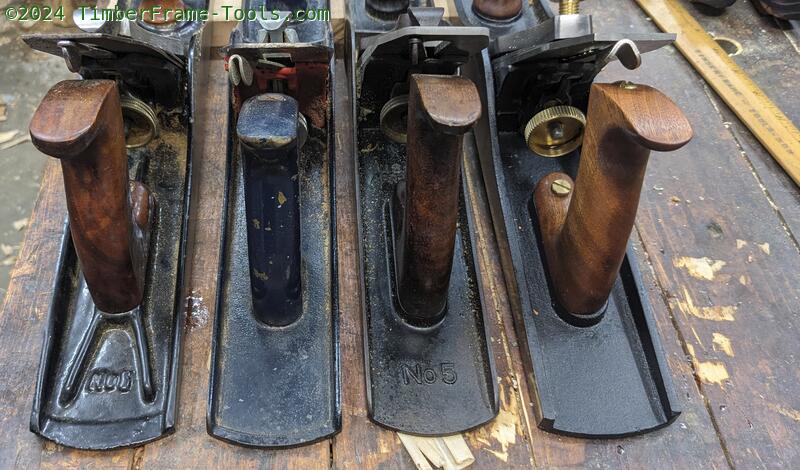
From Left to Right: Franken plane, Handyman, Bailey Type 13, TayTools Notice the difference in the thickness of the lateral adjuster lever on the Handyman compared to the TayTools. TayTools is nearly twice as thick.
The TayTools tote is the most comfortable. It has almost the same exact shape as the Bailey but it is just a little wider so if fills your hand better and provides more surface area in the direction you are pushing. I prefer the initial feel of the Bailey but only because I have logged so many hours using it, but after a bit of work with it, the TayTools is more comfortable.
One thing to note is that the TayTools uses a stamped lateral adjuster, similar to the Handyman. This is usually thought to be inferior to the surfboard fin style of the older Stanleys and the current crop of premium plane makers. In real comparison, the TayTools is much more robust than the stamped variety on the Handyman and is more rigid than the lateral adjust on the antique Bailey too. So I think the win actually goes to TayTools.
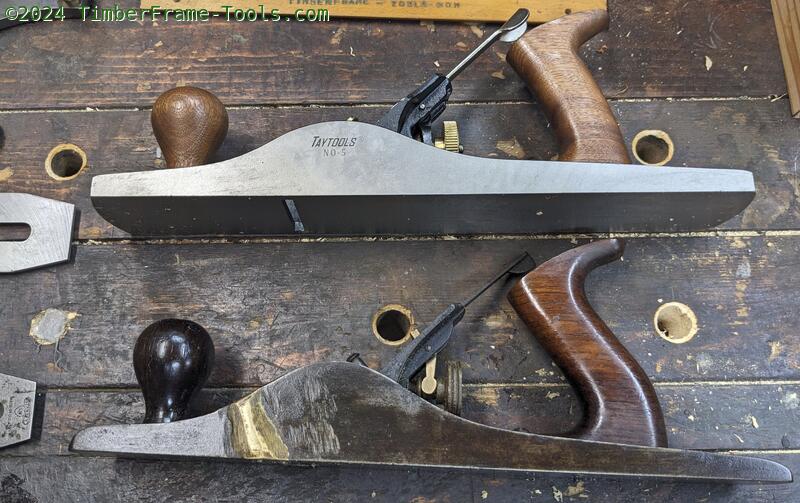
The TayTools does not have the graceful swoops and curves of the Stanley Bailey, but I think that is a good thing. The TayTools has more surface on the side to give it more stability on a chuting board.
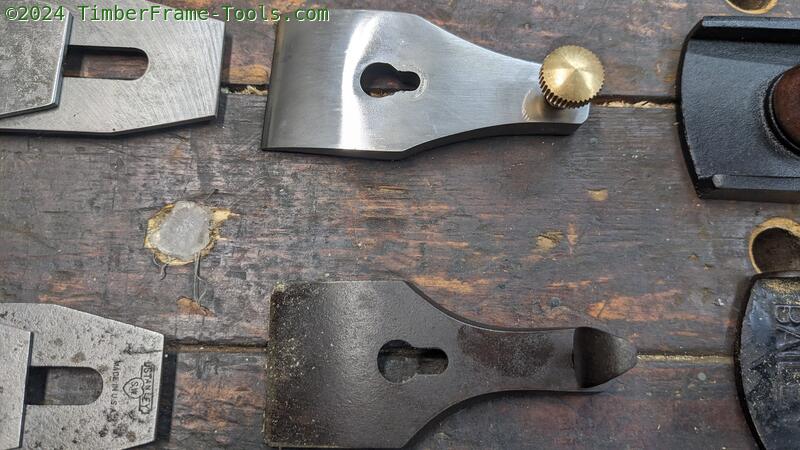
The TayTools cap iron (top) is prettier at this stage, though I bet it probably won’t look as good in 100 years like the Stanley (bottom).
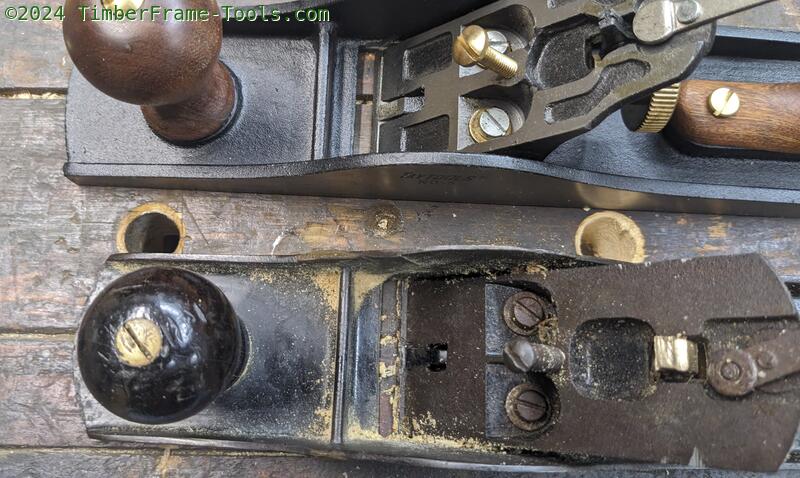
TayTools plane frog (top) compared to Antique Type 13 Stanley (bottom) Not a lot to compare here. Pretty similar other than the wheel on the lateral adjuster lever of the Stanley.

Here again you can really see the difference in the thickness of the casting of the plane bed between the thin Stanley (left) and the thicker TayTools (right). I am amazed at the fit between the tote and the mount at the base achieved by Stanley. It does illustrate the quality of days gone by.
Conclusion: I am really happy with my purchase of the TayTools #5 Jack plane. The performance of the plane is better than any of my other planes and it took me less than 15 minutes to achieve that. I don’t seen any obvious reason this would not get passed down to my son and maybe grandchild in the coming years.
I don’t have enough storage for 4 jack planes or enough arms to use them, so after long deliberation I am getting rid of the Stanley Handyman and turning my Grandfathers plane into service as a scrub plane. I also can’t think of a good reason to keep the Franken plane. Will probably donate them to my Habitat for Humanity ReStore.


